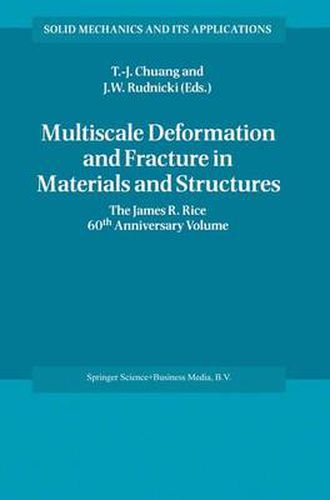Readings Newsletter
Become a Readings Member to make your shopping experience even easier.
Sign in or sign up for free!
You’re not far away from qualifying for FREE standard shipping within Australia
You’ve qualified for FREE standard shipping within Australia
The cart is loading…






This title is printed to order. This book may have been self-published. If so, we cannot guarantee the quality of the content. In the main most books will have gone through the editing process however some may not. We therefore suggest that you be aware of this before ordering this book. If in doubt check either the author or publisher’s details as we are unable to accept any returns unless they are faulty. Please contact us if you have any questions.
Modern Solid Mechanics considers phenomena at many levels, ranging from nano size at atomic scale through the continuum level at millimeter size to large structures at the tens of meter scale. The deformation and fracture behavior at these various scales are inextricably related to interdisciplinary methods derived from applied mathematics, physics, chemistry, and engineering mechanics. This book, in honor of James R. Rice, contains articles from his colleagues and former students that bring these sophisticated methods to bear on a wide range of problems. Articles discussing problems of deformation include topics of dislocation mechanics, second particle effects, plastic yield criterion on porous materials, hydrogen embrittlement, solid state sintering, nanophases at surfaces, adhesion and contact mechanics, diffuse instability in geomaterials, and percolation in metal deformation. In the fracture area, the topics include: elastic-plastic crack growth, dynamic fracture, stress intensity and J-integral analysis, stress-corrosion cracking, and fracture in single crystal, piezoelectric, composite and cementitious materials.
The book will be a valuable resource for researchers in modern solid mechanics and can be used as reference or supplementary text in mechanical and civil engineering, applied mechanics, materials science, and engineering graduate courses on fracture mechanics, elasticity, plasticity, mechanics of materials or the application of solid mechanics to processing, and reliability of life predictions.
$9.00 standard shipping within Australia
FREE standard shipping within Australia for orders over $100.00
Express & International shipping calculated at checkout
This title is printed to order. This book may have been self-published. If so, we cannot guarantee the quality of the content. In the main most books will have gone through the editing process however some may not. We therefore suggest that you be aware of this before ordering this book. If in doubt check either the author or publisher’s details as we are unable to accept any returns unless they are faulty. Please contact us if you have any questions.
Modern Solid Mechanics considers phenomena at many levels, ranging from nano size at atomic scale through the continuum level at millimeter size to large structures at the tens of meter scale. The deformation and fracture behavior at these various scales are inextricably related to interdisciplinary methods derived from applied mathematics, physics, chemistry, and engineering mechanics. This book, in honor of James R. Rice, contains articles from his colleagues and former students that bring these sophisticated methods to bear on a wide range of problems. Articles discussing problems of deformation include topics of dislocation mechanics, second particle effects, plastic yield criterion on porous materials, hydrogen embrittlement, solid state sintering, nanophases at surfaces, adhesion and contact mechanics, diffuse instability in geomaterials, and percolation in metal deformation. In the fracture area, the topics include: elastic-plastic crack growth, dynamic fracture, stress intensity and J-integral analysis, stress-corrosion cracking, and fracture in single crystal, piezoelectric, composite and cementitious materials.
The book will be a valuable resource for researchers in modern solid mechanics and can be used as reference or supplementary text in mechanical and civil engineering, applied mechanics, materials science, and engineering graduate courses on fracture mechanics, elasticity, plasticity, mechanics of materials or the application of solid mechanics to processing, and reliability of life predictions.